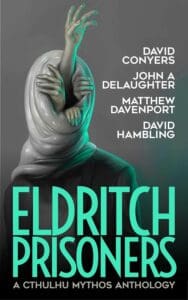
Synopsis:
A robot yearns to remember. A thief struggles to forget. A galaxy on the verge of collapse.
On the fringe of a broken civilization, a robot awakens with no memories and only one directive: find his creator. But in the village of Korthe, Beetro finds only radioactive pestilence, famine, and Miree—a tormented thief with dreams of retiring after her final score. Meanwhile, the fiefdom is plunged further into chaos when a new warlord seizes control, recasting serfs as refugees and leaving derelict robot peasants in his wake. With a shared interest in survival, Beetro and Miree team up to pull off an impossible castle heist: steal a single flake of dark matter, the world’s most valuable and mysterious ore.
But as they trek through the feudal wasteland in search of answers, they realize the true extent of the chaos surrounding them: the stars are disappearing from the sky and the entire galaxy is unraveling. As he uncovers his origin, Beetro discovers he may be the key to the salvation of the cosmos—or its destruction. Time, space, and loyalty become relative as he learns the real reason he was created.
A mind-bending science fiction epic with the bones of a fantasy traveling quest, Dark Theory unfolds through a journey of betrayal, identity, and unlikely friendships in a world of darkness set at the edge of space and time.
Review:
“It’s not binary, this good and evil thing. We live on a spectrum, and we dance wildly across it most of our days.”
That quote sums up the theme of this book very well. Some characters are better people than others, but all of them have flaws. Some are given the opportunity for redemption. Some never make it far enough to commit a fatal error. Most are human, but some, like Beetro, are sentient robots.
There is a lot to unpack in Dark Theory. The book begins with Beetro, who wakes up in a junkyard with no memory. He has a single directive: To find someone named Galiaro. But over the course of the book, he faced with circumstances and decisions that lead him to question who he is and why he was designed.
Then there’s Ribcage, a young girl who grew up on the streets, but who has the ability to Jump through space (there’s a more scientific basis to her ability explained later in the book, but at the beginning it almost seems magical.)
And there’s Miree, a young woman from an incredibly difficult past who finds it easier to make enemies than friends. Of all the characters featured, I think Miree endures the most trauma. I didn’t care for her much for most of the book, but she managed to redeem herself before the end.
Finally, there’s Arym. He’s from a secretive, underground society (literally underground—they tunnel through the earth to make their homes), but he’s young, inquisitive, and seeks adventure. It’s a combination that makes his elders question his loyalty to their society and lands him in a bit of trouble.
Some of the individual storylines didn’t connect for quite some time, but they all come together before the end—along with some unexpected twists. Of all the characters, I think Beetro was my favorite.
I liked the worldbuilding presented, and the overall theme about good and evil, but this book wasn’t without its flaws. There was a lot of repeated information between chapters (sometimes from different character viewpoints, but sometimes from the same character that encountered it previously.) Between that and some of the discussions a certain physics-minded character had in the latter half of the book, it tended to get bogged down and drag a bit…and it’s already a fairly long book. I liked Dark Theory well enough, just not so much that I want to continue the series.
I’d say if you like post-apocalyptic sci-fi with a largeish cast of characters set in an unforgiving world, you should give Dark Theory a try. While it wasn’t exactly to my tastes, maybe it will be to yours.








Leave a Reply